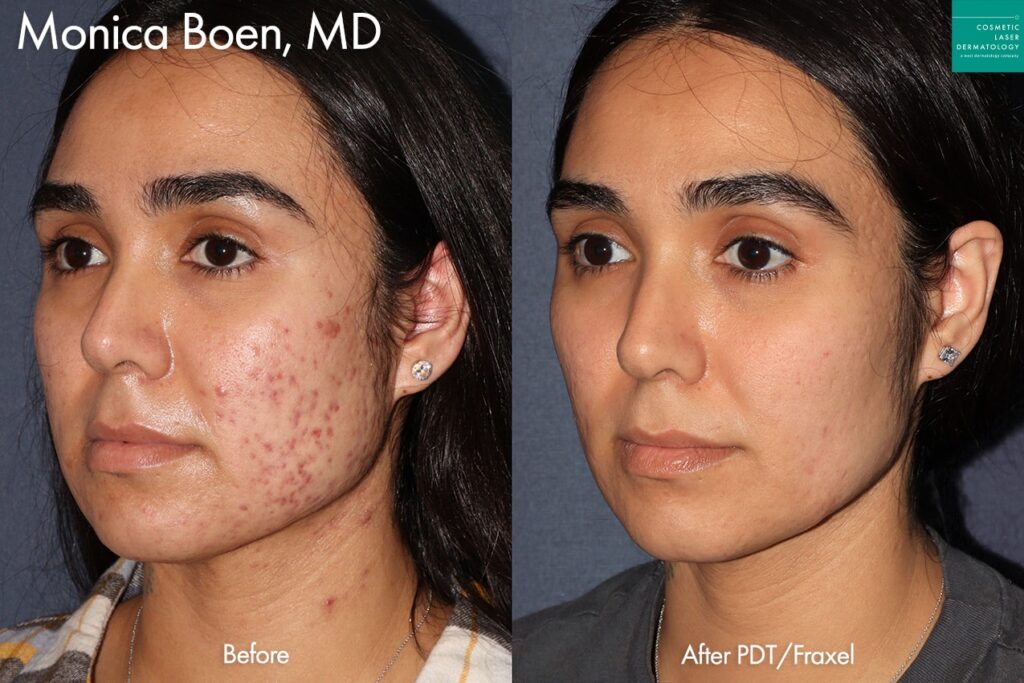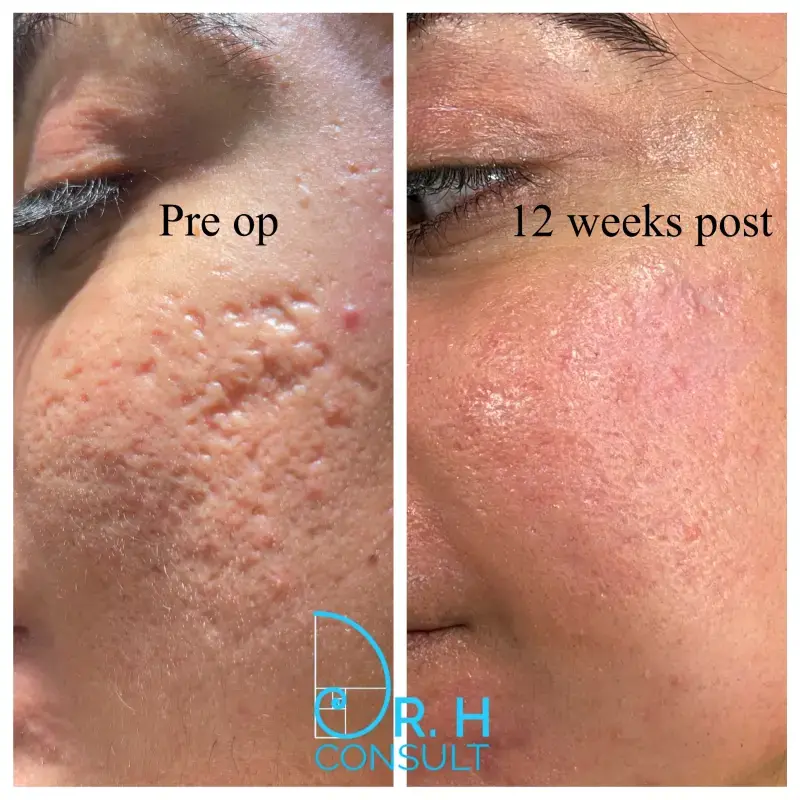Reliable Solutions for Acne Scars: How to Accomplish More Clear Skin
Reliable Solutions for Acne Scars: How to Accomplish More Clear Skin
Blog Article
Exploring Skin Problems: Identifying and Dealing With Acne Scars for Healthier Skin
Acne scars represent a substantial issue for people looking for to maintain healthy and balanced skin, as they can impact both appearance and self-confidence. Recognizing the various kinds of scars, from atrophic to hypertrophic, is important for figuring out appropriate therapy alternatives.
Understanding Acne Scars

The body's natural healing procedure can cause either atrophic marks, which appear as clinical depressions in the skin, or hypertrophic scars, which are raised and result from overflow of collagen. Additionally, the emotional toll of acne marks need to not be taken too lightly; several individuals report sensations of shame, anxiousness, and reduced self-esteem. This emotional problem can affect social interactions and overall quality of life.
Resolving acne scars calls for an extensive understanding of their formation and impact. Understanding of the capacity for lasting consequences connected with neglected marks can encourage people to seek appropriate therapies. Early treatment and efficient administration methods can significantly boost skin look and enhance mental strength, stressing the value of comprehending the complexities bordering acne marks.
Kinds Of Acne Scars
Acne scars can be categorized right into unique kinds, each exhibiting unique characteristics and requiring details treatment strategies. acne treatment for sensitive skin. The key sorts of acne marks include atrophic, hypertrophic, and keloid scars

Hypertrophic scars, on the other hand, are elevated over the skin level and are the result of excessive collagen manufacturing during the recovery procedure. They commonly remain within the borders of the original acne lesion. Keloid scars are similar yet extend past the initial injury site, developing larger, raised areas that can be painful or itchy.
Comprehending these sorts of scars is crucial for choosing appropriate therapy alternatives. Different marks might respond much better to particular treatments, such as laser treatments, fillers, or medical treatments, stressing the relevance of a customized method to acne scar monitoring.
Identifying Your Scars
When assessing the appearance of your skin, it is important to properly identify the kind of scars existing, as this will educate one of the most reliable therapy strategy. Acne scars typically fall into 2 classifications: atrophic and hypertrophic scars. Atrophic scars, which are the most typical, look like clinical depressions or indentations on the skin. These can additionally be identified right into ice-pick marks, boxcar scars, and rolling scars, each displaying distinct characteristics and calling for different techniques for assessment.
Hypertrophic marks, on the various other hand, are raised and occur because of extreme collagen manufacturing throughout the healing process. Recognizing the certain attributes of your marks-- such as width, texture, and depth-- is essential for proper identification (acne treatment for sensitive skin). Furthermore, think about the circulation of scars across your skin, as this can suggest the extent and period of the you can find out more acne problem
Engaging with a skin doctor can provide important understandings right into the nature of your scars, assisting in the differentiation between different kinds. A comprehensive understanding of your marks will eventually result in a much more customized and effective treatment plan, making sure a more clear and much healthier skin tone.
Treatment Choices Available
Recognizing the certain type of acne marks existing on your skin prepares for checking out efficient treatment options. Usual kinds of acne marks consist of atrophic (clinically depressed), hypertrophic (raised), and post-inflammatory erythema.
For atrophic marks, choices such as chemical peels, microneedling, and laser resurfacing are widely used. Chemical peels off use acids to get rid of the outer layer of skin, promoting brand-new cell growth. Microneedling entails small needles that create micro-injuries, boosting collagen manufacturing. Laser resurfacing targets damaged skin cells, improving structure and tone.
Hypertrophic scars can be treated with corticosteroid shots to flatten the scar or laser therapy to decrease soreness and improve appearance. Silicone gel sheets and stress dressings might likewise help in managing increased scars.
Additionally, dermal fillers can briefly complete clinical depressions from atrophic marks, while surgical excision may be proper for serious situations. Each therapy option has its benefits and considerations, making it necessary to speak with a skin specialist. They can offer customized suggestions based upon the from this source kind and seriousness of your marks, in addition to your skin kind and total wellness.
Tips for Prevention
Reliable prevention strategies can substantially reduce the probability of developing acne scars. The initial step is to preserve a constant skin care regimen that includes gentle cleaning, exfoliation, and hydrating. Utilizing non-comedogenic items helps prevent blocked pores, which can exacerbate acne. Furthermore, incorporating topical treatments containing salicylic acid or benzoyl peroxide can properly decrease and take care of outbreaks swelling.
Avoiding the urge to pick or pop acne lesions is important, as this can result in deeper skin damages and increase the danger of scarring. Instead, take into consideration utilizing a cool compress or over-the-counter therapies to minimize swelling and redness.
Sun defense is an additional important facet of avoidance; ultraviolet (UV) rays can darken scars and hinder the recovery process. Using a broad-spectrum sunscreen with a minimum of SPF 30 daily can secure the skin and promote also recovery.
Finally, maintaining a well balanced diet rich in vitamins, anti-oxidants, and minerals sustains skin health and recovery. Staying moisturized and taking care of stress levels can also play a substantial duty in lowering acne flare-ups. By applying these approaches, individuals can considerably reduce their opportunities of developing acne marks.
Verdict
In final thought, understanding and determining acne scars is essential for reliable treatment and accomplishing much healthier skin. Numerous kinds of acne marks, including atrophic and hypertrophic scars, demand particular interventions tailored to private needs. Therapy alternatives range from chemical peels and microneedling to corticosteroid injections, emphasizing the significance of getting in touch with a dermatologist. Additionally, embracing a mild skincare routine and protecting the skin from UV exposure can substantially contribute to the avoidance of additional scarring and general skin health and wellness.
The body's natural recovery procedure can result in either atrophic marks, which appear as anxieties in the skin, or hypertrophic marks, which are elevated and result from overflow of collagen. They are further separated into three subtypes: ice choice scars, boxcar scars, and rolling scars. Acne marks usually fall right into two categories: hypertrophic and atrophic marks. These can further be identified into ice-pick scars, boxcar marks, and rolling marks, each showing distinct attributes and calling for various web link approaches for assessment.
Different types of acne marks, including atrophic and hypertrophic marks, require particular interventions customized to individual needs.
Report this page